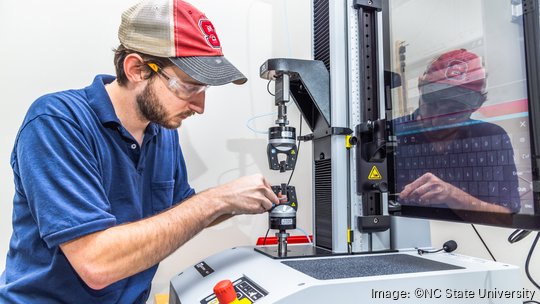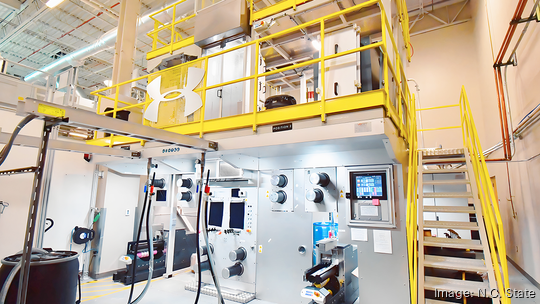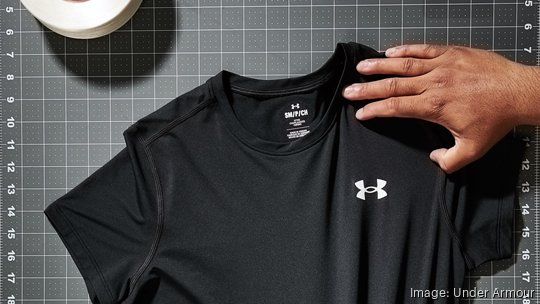
The new direction of Under Armour could be pioneered at North Carolina State University.
Quietly, the Baltimore-based performance apparel giant has teamed up with Celanese Corporation and researchers at N.C. State to invent an alternative to spandex. Leading the charge on innovation is Kyle Blakely, an N.C. State graduate who is now the senior vice president heading up innovation at Under Armour (NYSE: UAA).
In an interview, Blakely said the company looks at N.C. State “as an extension of our innovation team here.”
It’s a mindset Under Armour has had since before opening its innovation center at Centennial Campus in 2022, he said.
The project to create the new yarn started in 2017. Blakely said it took more than a year to convince its partner, now known as chemical company Celanese Corporation (NYSE: CE), to try their polymer in the lab. He remembers converging into a laboratory at N.C. State, partners highly skeptical.
“And then they strung it up and it runs like magic,” he said. “That gave us the confidence to start this journey…. Now we make lots of fabrics out of it in Baltimore and partner mills all over the world.”

The real work happened at N.C. State, where over the past two years, the school and the company have been quietly working to develop new materials based on the polymer yarn.
Called Neolast, the new product is billed as an alternative to spandex. While it stretches, it lacks spandex’s moisture retention and inability to be recycled. And it’s produced using a solvent-free process that eliminates the potentially hazardous chemicals typically used to make stretch fabrics. As a result, Under Armour hopes to reduce the number of spandex products it sells by 75 percent by 2030.
Recently, the first product using those materials hit the market, a collection of T-shirts within Under Armour’s activewear line.
And Blakely said it’s just the start.
“We’ve just done the first generation,” he says of the yarn. “And we have a pipeline that’s loaded right now for at least five years where we’re working on the next generation.”

From Knightdale native to Under Armour innovator
For Blakely, a Knightdale native, the N.C. State connection is particularly impactful, as it’s the school that, quite literally, got him to where he is today. Blakely never intended to work in textiles. But he always knew he’d go to N.C. State, where his father had obtained a nuclear engineering degree.
“I was pre-determined, probably before I was even born that this was where I wanted to go to school,” Blakely said. “The challenge was, what was I going to do when I got there?”
It was a Thursday morning when Blakely and his then-freshman roommate, another Southeastern Raleigh High School grad named Andrew Bernard, currently senior director of supply chain and customer service at Glen Raven, walked across the campus to see presentations from various colleges.
There was the engineering school — “I was scared to death because math and chalkboard chemistry wasn’t my thing.” There was the business school and its “mob of people,” an intimidating proposition in and of itself. And then there was the College of Textiles, one of the only schools that still had coffee and doughnuts on display — attractive to a poor, frugal college student.
Blakely remembers that Thursday, munching on doughnuts and listening to the recruitment presentation, as the day it all clicked. The College of Textiles was offering technically-oriented degrees for the curious, wrapped in business know-how. And the impressive job placement odds — currently 82 percent graduate and start work in a related field — didn’t hurt.
Flash forward today, and he said the business case for the degree keeps rising, particularly from a recruitment standpoint. Connections to alumni helped open doors for him at Under Armour, he said. And as partnerships like this one continue to mature, it’s going to mean a more real-world experience graduates can take with them to the industry.